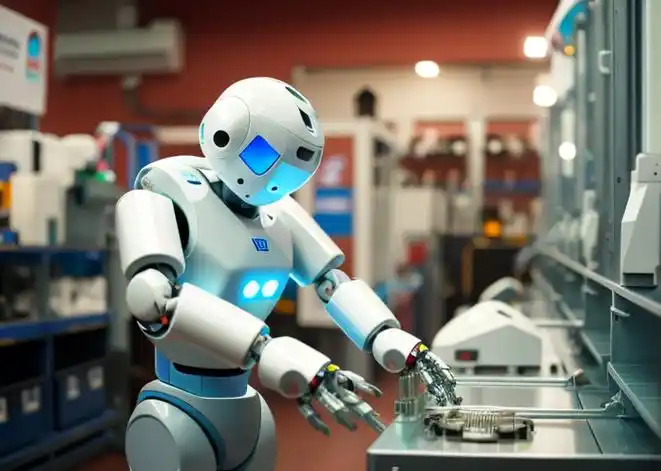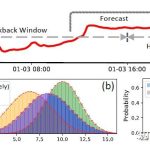Introduction: A Symbiotic Revolution Between Silicon and Carbon
On April 14, 2025, a humanoid robot named “Zhongqing SE01” navigated seamlessly through a crowded street in Shenzhen, its fluid gait and obstacle-avoidance capabilities drawing global attention. This marked a pivotal moment in the transition of humanoid robots from labs to mass production. From Tesla’s Optimus sorting batteries in factories to Unitree’s G1 performing traditional Chinese dances on stage, 2025 has been hailed as the “Year of Mass Production” for humanoid robotics—a leap not only in manufacturing but also in redefining human-machine coexistence.
I. Technological Breakthroughs: Hardware, Algorithms, and Data
1. Hardware Revolution: Localizing Core Components
The foundation of mass production lies in breakthroughs in critical components. Chinese suppliers are disrupting international monopolies: Jiangsu Leili’s high-precision joint motors are 30% cheaper than Japanese equivalents, while Changying Precision has achieved small-batch production of domestically made planetary roller screws. Tesla’s Optimus reduced complexity through streamlined design, upgrading its dexterous hand from 11 to 22 degrees of freedom (DoF) with biomimetic tendon materials for flexible grasping. Unitree’s G1, equipped with self-developed M107 joint motors (peak torque: 360 N·m), sold out within a day of pre-sales after showcasing backflips and other agile movements.
Key Milestone: China’s first national standards for humanoid robotics were officially approved in April 2025, covering technical requirements for mobility, multi-machine collaboration, and operational safety.
2. Software Evolution: Embodied AI Meets Large Models
The integration of embodied intelligence and AI models is critical for human-like adaptability. Tesla leverages autonomous driving data to train robots in environmental perception and path planning. Chinese firms like Shanghai AI Lab and Huawei-UBTECH collaborations have embedded multimodal AI into robots like Walker S1, enabling them to execute vague commands such as “hand the tool to the engineer in blue”.
Case Study: The “Gewu” simulation platform, developed by China’s National Humanoid Robotics Innovation Center, slashes algorithm iteration cycles by 50% through virtual-real migration training.
3. Data-Driven Iteration: From Simulation to Real-World Scenarios
Shanghai’s heterogeneous robot training facility, accommodating over 100 robots, generates 10,000+ datasets daily. UBTECH’s Walker S1, deployed at BYD factories, reduced decision-model iteration cycles from 3 months to 2 weeks using 100,000+ industrial datasets. Open-source ecosystems are accelerating progress: The “Qinglong” open-source platform, released by the National Innovation Center, shares millions of datasets to lower R&D barriers for SMEs.
II. Application Scenarios: Factories, Homes, and Beyond
1. Industrial Manufacturing: Efficiency and Safety Redefined
At Tesla’s Texas Gigafactory, Optimus sorts batteries at 0.5 seconds per unit, replacing 20% of high-risk jobs. In China, UBTECH’s Walker S1 performs millimeter-precision inspections at Geely’s Ningbo plant, cutting error rates from 1.2% to 0.3% while boosting efficiency by 30%. Notably, robots trained in simulated extreme environments (e.g., high temperature/pressure) at Shanghai’s Zhangjiang facility can handle nuclear waste containers, reducing human exposure by 90%.
2. Home Services: Guardians for Aging Societies
With China’s elderly population exceeding 300 million, care robots like UBTECH’s nursing assistant monitor vital signs and assist with mobility (±1mm arm precision). Unitree’s G1, offered at a daily rental rate of ¥8,000, achieves 87% user satisfaction in tasks like cleaning and child companionship. Japan’s SoftBank Pepper, used in elderly care, reduces depression rates by 15% through micro-expression analysis.
Innovation Spotlight: Meituan’s elderly-care robots operate 18 hours daily at 1/10 the energy cost of human labor, showcasing the “Robot-as-a-Service” model.
3. Commercial and Public Service Innovations
Beijing’s E-Town plans the world’s first humanoid robot marathon to test endurance and navigation. In Hangzhou hotels, robot front desks handle check-ins via voice commands, cutting labor costs by 40%. Educational applications are emerging: Shenzhen schools use humanoid robots to demonstrate physics experiments, improving student comprehension by 25%.
III. Challenges: Cost, Ethics, and Ecosystem Battles
1. Cost Reduction: The ¥200,000 to ¥50,000 Crusade
Core components dominate costs: harmonic reducers (25%), servo motors (20%), and controllers (15%). Tesla’s scale production has pushed Optimus below ¥200,000, while Unitree’s G1 achieves ¥99,000 by simplifying leg structures (12 DoF). Industry forecasts suggest costs could drop to ¥50,000 at 100,000-unit production scales, requiring supply chain synergy—BYD’s retrofitted automotive lines now produce joint motors at 5x capacity.
2. Ethical Dilemmas: Job Displacement and Privacy
The International Labour Organization warns that humanoids may replace 8% of manufacturing jobs by 2030. However, UBTECH’s factory deployments show robots creating new roles: each Walker S1 requires 1 maintenance engineer and 2 data annotators. Privacy concerns persist: EU mandates “data sandboxes” for sensitive information processed locally by home robots.
3. Ecosystem Wars: Open Source vs. Closed Loops
Diverging strategies shape global competition: Tesla’s closed ecosystem (Optimus + FSD chips) contrasts with China’s open-source “Qinglong” platform, adopted by 16 firms for modular customization. Closed systems enable rapid iteration, while open frameworks drive accessibility.
IV. Future Outlook: The 2030 Human-Machine Symbiosis
1. Technological Convergence: From Tools to Generalists
NVIDIA’s “post-training” mode, slated for 2026, allows robots to learn tasks like dishwashing after 10 demonstrations. By 2030, cross-scenario adaptability may emerge: a factory-trained robot could repair home appliances.
2. Societal Transformation: New Professions and Ethics
Emerging roles include robot psychologists (addressing human-machine collaboration anxiety) and AI ethicists. Legal frameworks are evolving: South Korea mandates emergency shut-off switches, while Japan prohibits solo drug administration by care robots.
3. The Ultimate Vision: Silicon-Carbon Civilization
When Boston Dynamics’ Atlas plays soccer with children or UBTECH’s Walker recites poetry for the elderly, technology transcends utility. As Elon Musk stated: “Humanoids are not competitors but extensions of human evolution”.
Conclusion: 2025—A Leap Toward a New Civilizational Paradigm
From millimeter-level factory inspections to morning coffee brewing in Shanghai households, humanoid robots are redefining productivity and daily life. This revolution is not merely a triumph of gears and code but a reimagining of intelligence itself. As the first mass-produced robots roll off assembly lines, we witness not just a technological milestone but the dawn of a symbiotic civilization.
References:
: National standards for humanoid robotics (April 2025)
: Industry reports on 2025 as the “mass production year”
: Case studies on cost, ethics, and applications
: Policy and innovation center updates


